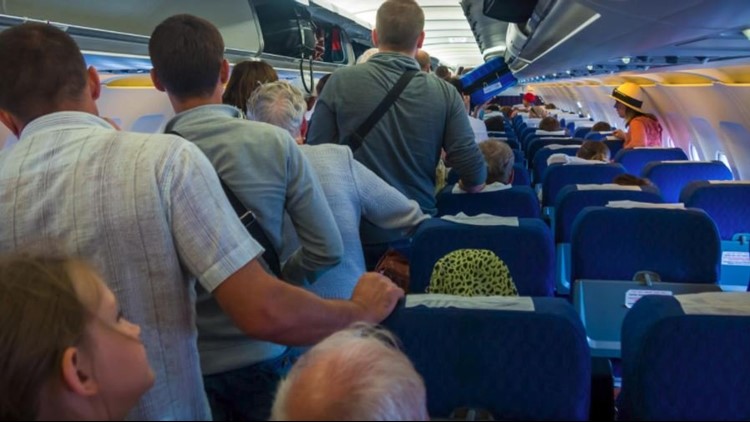If you worry about catching a nasty infection when you fly, a new study suggests your risk boils down to exactly how close you are to that sick passenger.
A row in front, a row in back, a couple of seats to the side, and your chances of getting sick jump, researchers report.
“Passengers should not, however, worry about getting sick from somebody coughing five rows behind,” said lead researcher Vicki Stover Hertzberg, director of Emory University’s Center for Data Science, in Atlanta.
In the study, funded by the airplane manufacturer Boeing, Hertzberg and her colleagues looked at the chances of an infectious passenger transmitting an illness to an uninfected person through large respiratory droplets within about a radius of a yard.
“Our particular model assumed an extraordinarily high infection rate,” she said. “We quadrupled the rate of infection observed in a plane that sat on a tarmac without any air circulation for nearly five hours — a worst-case scenario.”
This model indicated that passengers at highest risk are those seated within a row of the sick passenger, or a seat or two to the side. These folks faced an 80 percent increased risk of catching whatever made the original passenger sick.
But, “the risk to passengers seated outside of this perimeter was very low,” under 3 percent, Hertzberg said.
“Our model does not take into account the risk of transmission via [vomiting],” she added.
The researchers added that a sick crew member could infect close to five passengers per flight.
In addition to the tarmac scenario, the investigators took five round-trip cross-country flights. Four of the flights were taken during flu season.
“We took environmental samples on all flights and tested them for 18 common respiratory infections,” Hertzberg said. “All the samples were negative.”
One infectious diseases expert said the findings should reassure fliers.
“This study tells us something we knew, which is that air filters on planes are about 95 percent effective,” said Dr. Marc Siegel. He’s a professor of medicine at NYU Langone Medical Center in New York City.
“You won’t get sick simply by being in the airplane,” he said.
To stay healthy while flying, Hertzberg said, you should wash your hands often and keep them away from your face.
“If you are a sick passenger, observe cough-sneeze etiquette — cough or sneeze downward, into the crook of your elbow. As a courtesy to neighboring passengers, turn your air on,” she said.
In addition, Siegel recommends keeping hydrated, because dry nasal passages are ripe for infection.
Another health expert, Dr. Sunil Sood, chairman of pediatrics at Northwell Health Southside Hospital in Bay Shore, N.Y., recommends carrying a face mask with you.
“I like to take a mask with me, and if my neighbor is coughing, I try to wear the mask,” he said.
The report was published online March 19 in the Proceedings of the National Academy of Sciences.



